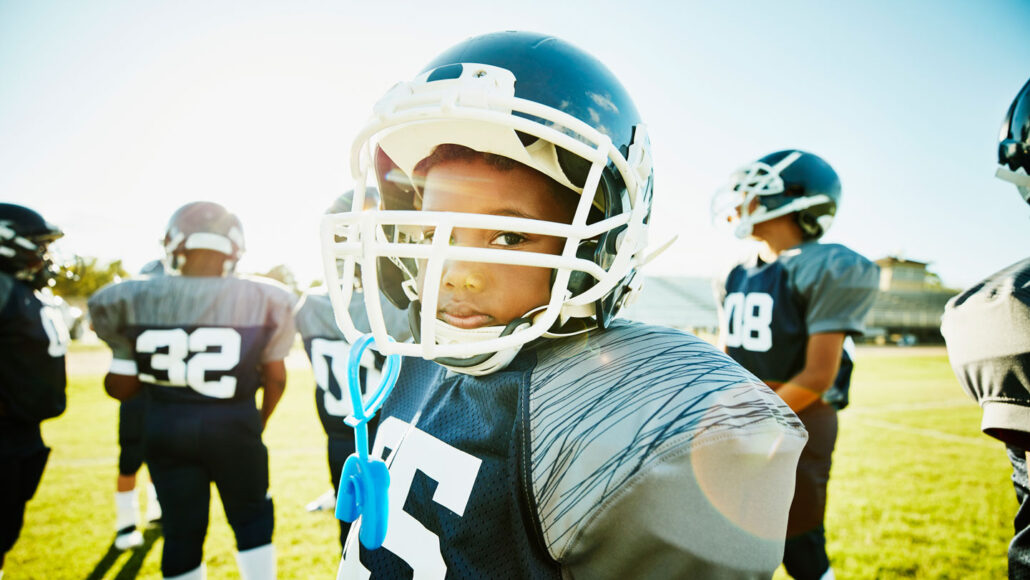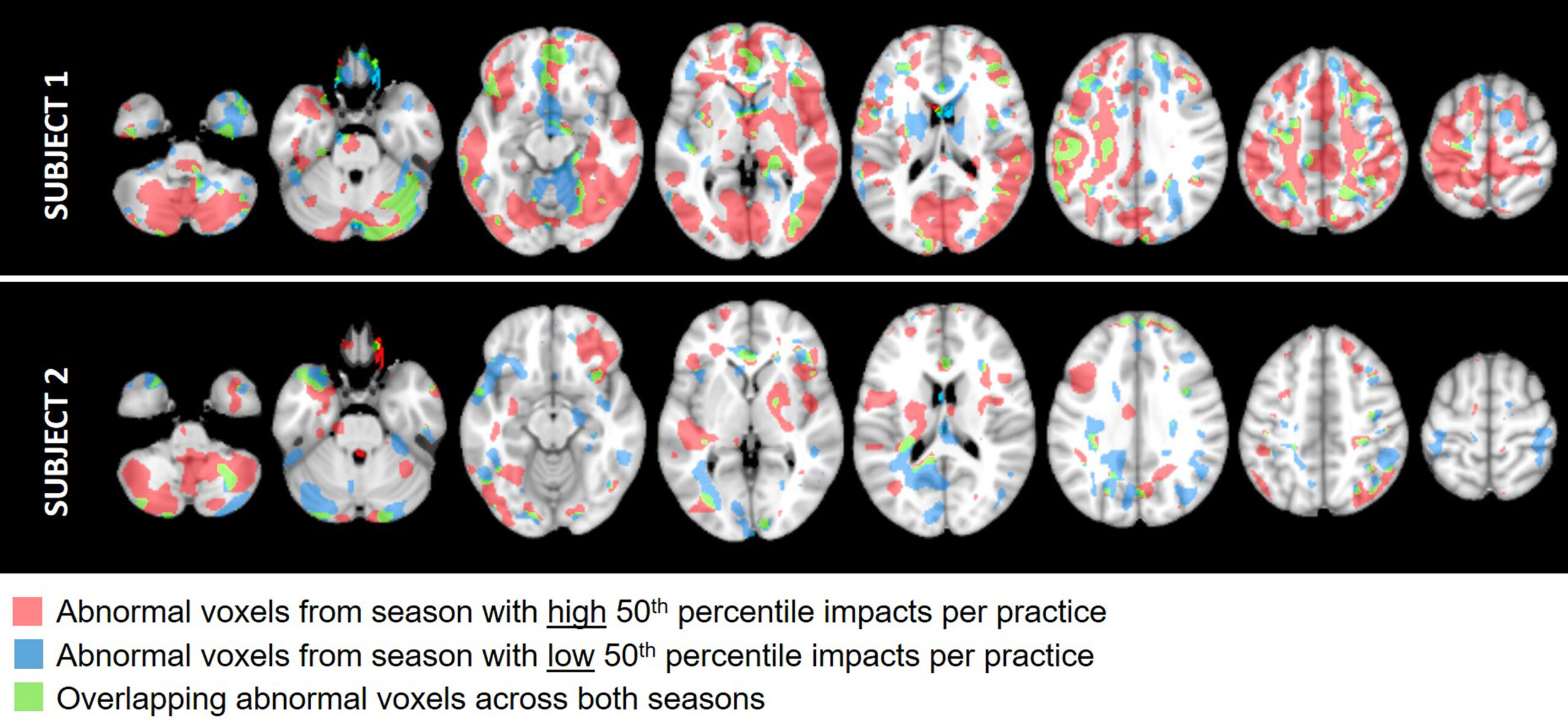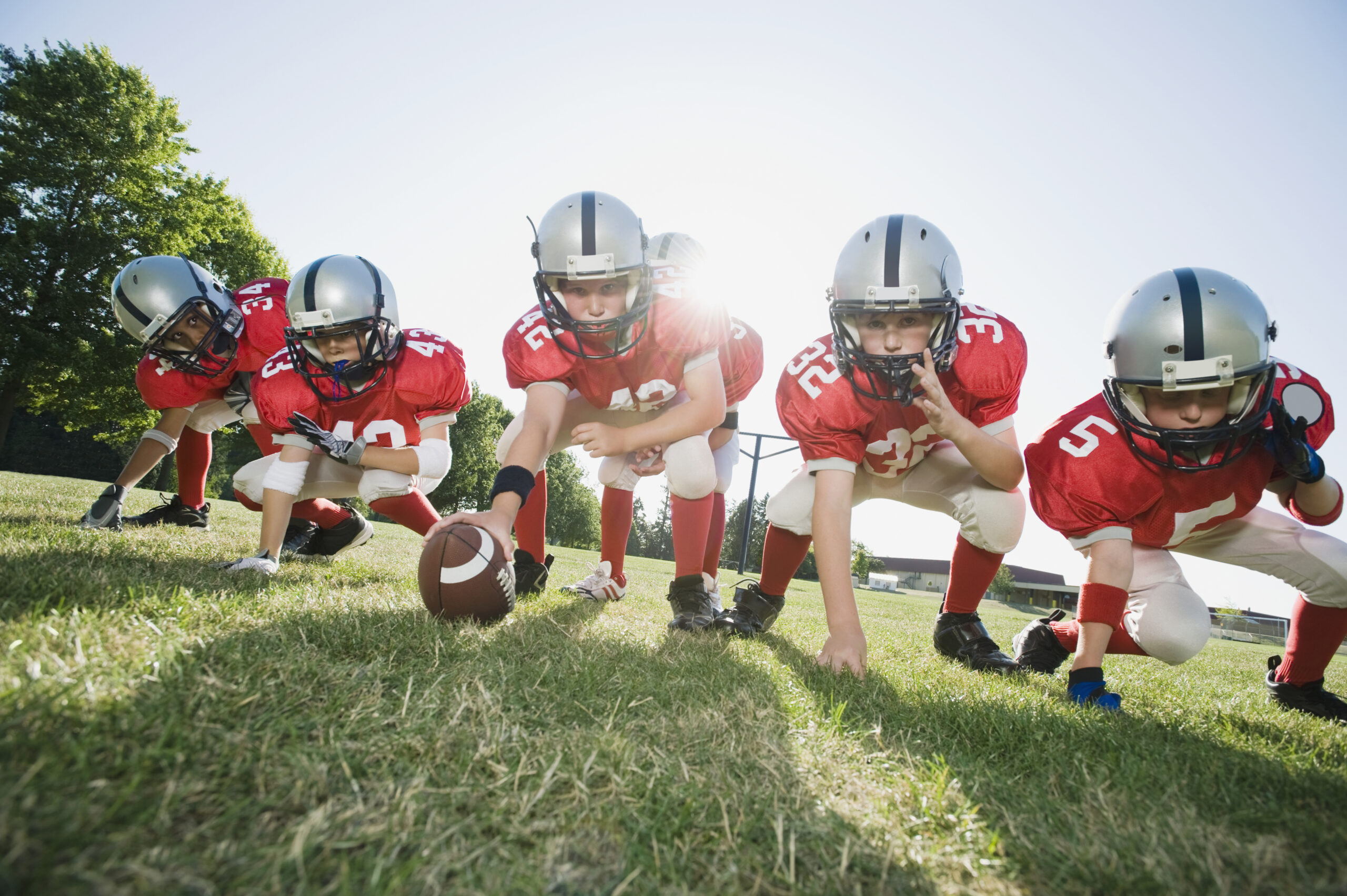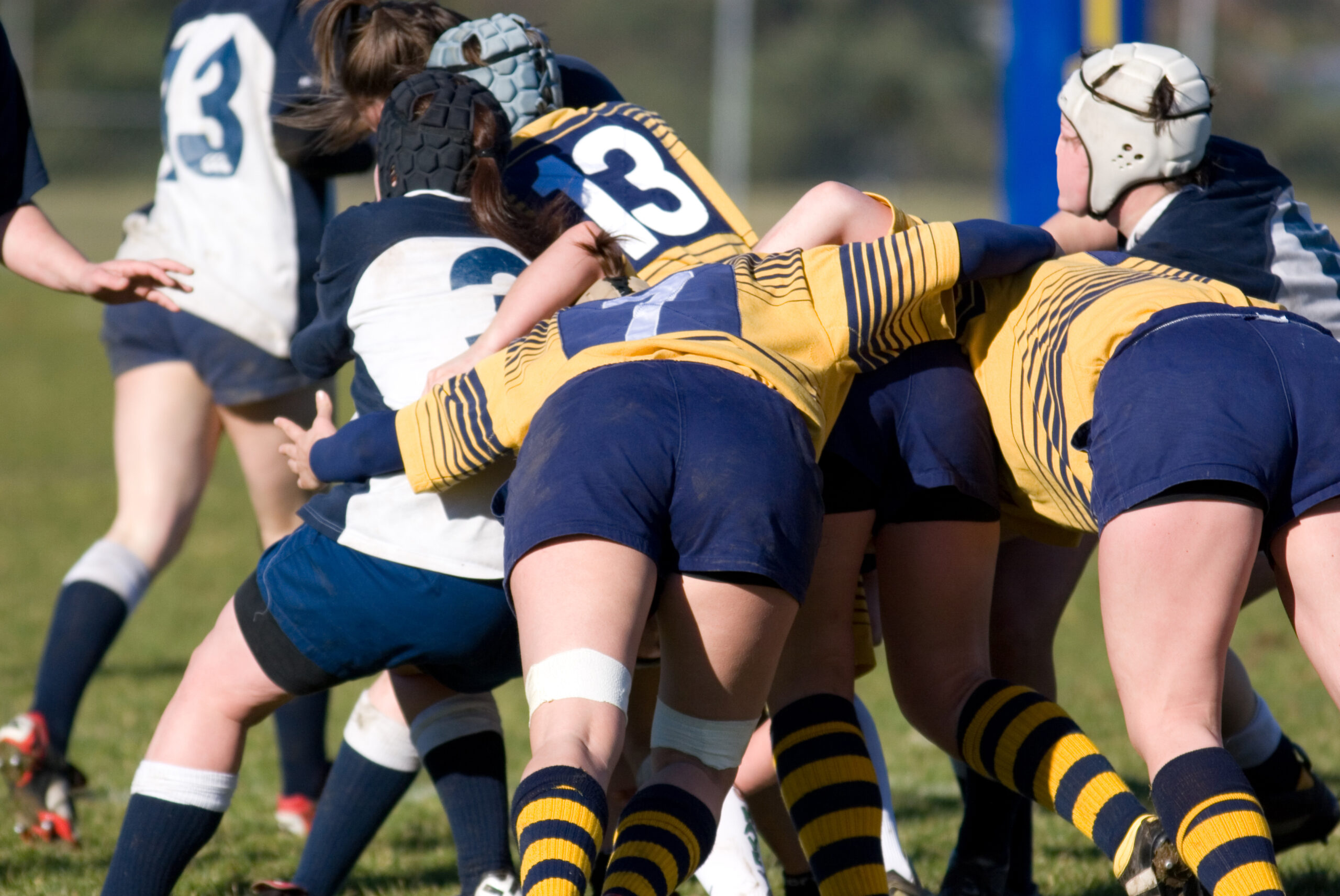It doesn’t take a concussion for head hits to harm young brains
Lesser impacts from sports, such as football, can still take a toll, new data show

Young football players aged 10 to 14 can sustain hundreds of head impacts per season, a new study finds.
Thomas Barwick/DigitalVision.
American football is a rough game, even at the middle-school level. A new study finds that the heads of young players can get hit hundreds of times each season. And those hits can leave their mark on a young player’s brain, researchers now report.
The hits causing changes do not even have to be hard enough to cause a concussion, a type of traumatic brain injury.
Jillian Urban is a biomedical engineer at Wake Forest University in Winston-Salem, N.C. Her team attached devices to the padding inside helmets worn by 195 boys who play football. Most of the kids ranged in age from 10 to 14. Sensors in their helmets recorded changes in the rate and direction of their heads’ movements. These data showed how many times each kid’s head had sustained a hit during play, along with where and how hard each hit had been.
Urban’s group tallied these data over five years. About one in four kids had played football at least two years in a row. And these 47 players together logged a total of more than 41,000 head impacts!
The average number per boy in each season ranged from 296 to 323. Most hits took place during practice. Luckily, few of the head hits were severe enough to cause concussions. Those head traumas can lead to headaches, dizziness, forgetfulness — even unconsciousness.
Urban’s team reported its findings in August’s Journal of Neurosurgery: Pediatrics.

Looking into the brain
The researchers also imaged the brains of 19 football players before and after each of two back-to-back seasons of play. This magnetic resonance imaging focused on the brain’s white matter.
“I think of [white matter] as communications highways in the brain,” Urban says. It sends signals “from one area of the brain to another.” This white matter contains fibers known as axons. They extend out from cells called neurons. Myelin, a fatty material, covers many of these nerve fibers and gives white matter its color.
Elizabeth Davenport at the University of Texas Southwestern in Dallas also worked on the new study. This biomedical engineer likens white matter to rubber garden hoses. Think of the axon and information flowing through it as a garden hose carrying water, she says. As with a hose, she explains, “if you break the outer [myelin] layer, the information isn’t going to get where it needs to go as efficiently.”
The researchers also took MRI scans of the brains of 16 young athletes who played non-contact sports, such as swimming, track and tennis. These athletes formed a control group against which the football players were compared.

Urban’s group tallied how many points in the white matter of the football players’ brains differed from what was typical for the control group. “The more points where the white matter was different, the higher their score,” Davenport says. Players with higher scores had, on average, sustained more frequent hits per practice session.
In a separate study, Urban and others looked at the frequency and force of head impacts in soccer. Eight girls, aged 14 to 15, wore mouthpieces with sensors during practices and games. In two seasons, the girls had more frequent head hits during practice. But head impacts during games were generally more forceful.
Graduate student Stewart Pritchard, at Wake Forest, talked about the work at the American Academy of Neurology’s Sports Concussion Conference on July 30.
What do the findings mean?
“Right now, all we know is that the brain is changing,” says Davenport — and not in a good way. That correlation, she says, “tells us that just hitting your head, even without a concussion, can cause changes.”
She and others don’t know what the long-term effects of those white-matter changes might be.
During adolescence, “We know that there are there’s lot of [brain] development going on,” says Ravi Menon. He’s a medical biophysicist at Canada’s Western University in London, Ontario. The brain constantly prunes neurons and connections as it moves toward adulthood, he notes. At the same time, young people are going through puberty, learning new things and forming important social bonds.
Anything that disrupts all of this is “really not good,” he says.

Menon did not work on the new study. His group has, however, done studies on athletes who get repeated hits to the head. One focused on college women who played rugby, another contact sport. Changes emerged in the white matter of their brains, too. His team’s findings appeared in the July 28, 2020 Neurology.
“We don’t want to scare people,” Menon says, because in most athletes, “the brain seems to recover.” This plasticity, he says, is the brain’s way of rewiring itself. However, he adds, changes are clearly showing up on those MRI scans. And, he adds, “We know it’s damage.”
Will too many hits to the noggin make recovery harder from other problems that may happen years from now? “We basically don’t know,” Menon says. “The benefits of exercise,” he adds, “outweigh all the risks that we know of right now.” But over time and repeated head hits, he says, “contact sports do have some unquantifiable risk.”
“The good news is that the less you hit your head, the fewer changes we see,” Davenport says.
Practice is where most head hits occurred, she points out. And “practice takes up a lot more time than games. So by modifying practice drills,” she says, “we could significantly reduce the number of head impacts.” And that would allow players to still enjoy their favorite sports.







